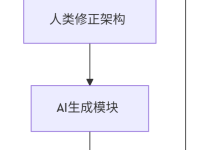生成视频字幕是许多视频处理任务的核心需求。本文将指导你使用 OpenAI 的 Whisper 模型为视频文件(如电视剧《Normal People》或电影《花样年华》)生成字幕(SRT 格式)。我们将从提取音频开始,逐步实现字幕生成,并提供一个 Python 脚本实现批量处理。此外,我们还将探讨如何处理非英语音频(如中文)并优化字幕质量。
前提条件
在开始之前,请确保安装以下工具:
1. FFmpeg:用于从视频提取音频。
- 安装:
- Windows:下载 FFmpeg 并添加到系统路径。
- macOS:brew install ffmpeg
- Linux:sudo apt-get install ffmpeg(Ubuntu/Debian)或 sudo dnf install ffmpeg(Fedora)
2. Python 3.8+:用于运行脚本和 Whisper。
- 安装 Python:python.org。
3. Whisper:OpenAI 的语音转文字模型。
- 通过 pip 安装:pip install openai-whisper
4. uv(可选):用于管理 Python 项目环境。
- 安装:pip install uv
5. 视频文件:准备 MP4 或 MKV 格式的视频文件(如《Normal People》或《花样年华》)。
步骤 1:提取音频
第一步是从视频文件中提取音频。我们使用 FFmpeg 将视频的音频流保存为 AAC 格式。
示例命令
为《Normal People》第1季第1集提取音频:
ffmpeg -i /path/to/Normal.People.S01E01.mp4 -vn -acodec copy /path/to/audio/Normal.People.S01E01.aac
- -i:输入视频文件路径。
- -vn:禁用视频流(仅提取音频)。
- -acodec copy:直接复制音频流,不重新编码,保持原始质量。
- 输出:保存为 /path/to/audio/Normal.People.S01E01.aac。
注意事项
- 确保输出目录(如 /path/to/audio/)存在。
- 替换 /path/to/ 为实际文件路径。
步骤 2:生成字幕
使用 Whisper 模型将音频文件转换为 SRT 格式的字幕文件。Whisper 支持多种模型(如 tiny、base、small、medium、large 和 turbo),turbo 速度快,适合快速测试。
示例命令
为提取的音频生成字幕:
whisper /path/to/audio/Normal.People.S01E01.aac –model turbo –output_format srt –output_dir /path/to/generated_subs/
- –model turbo:使用 turbo 模型(快速但可能牺牲精度)。
- –output_format srt:输出 SRT 格式字幕。
- –output_dir:指定字幕输出目录。
- 输出:生成 /path/to/generated_subs/Normal.People.S01E01.srt。
示例输出
生成的前几条字幕可能如下:
1
00:00:00,000 –> 00:00:24,000
It's a simple game. You have 15 players. Give one of them the ball.
Get it into the net.
2
00:00:24,000 –> 00:00:26,000
Very simple. Isn't it?
步骤 3:批量处理脚本
手动为多个视频生成字幕效率低下。以下 Python 脚本自动处理目录中的所有视频文件,提取音频并生成字幕。
完整脚本
import os
import subprocess
import argparse
defextract_audio(input_dir, output_dir):
"""Extract audio from video files in input_dir and save to output_dir."""
ifnot os.path.exists(output_dir):
os.makedirs(output_dir)
for filename in os.listdir(input_dir):
if filename.endswith(('.mp4', '.mkv')):
input_path = os.path.join(input_dir, filename)
audio_filename = os.path.splitext(filename)[0] + '.aac'
output_path = os.path.join(output_dir, audio_filename)
command = [
'ffmpeg', '-i', input_path, '-vn', '-acodec', 'copy', output_path
]
print(f"Extracting audio: {command}")
try:
subprocess.run(command, check=True)
except subprocess.CalledProcessError as e:
print(f"Error extracting audio from {filename}: {e}")
defgenerate_subtitles(input_dir, output_dir):
"""Generate subtitles for audio files using Whisper."""
ifnot os.path.exists(output_dir):
os.makedirs(output_dir)
for filename in os.listdir(input_dir):
if filename.endswith('.aac'):
input_path = os.path.join(input_dir, filename)
command = [
'whisper', input_path, '–model', 'turbo',
'–output_format', 'srt', '–output_dir', output_dir
]
print(f"Generating subtitles: {command}")
try:
subprocess.run(command, check=True)
except subprocess.CalledProcessError as e:
print(f"Error generating subtitles for {filename}: {e}")
if __name__ == "__main__":
parser = argparse.ArgumentParser(description="Extract audio and generate subtitles.")
parser.add_argument("input_dir", help="Directory containing video files.")
parser.add_argument("audio_dir", help="Directory to save extracted audio files.")
parser.add_argument("subtitle_dir", help="Directory to save generated subtitles.")
args = parser.parse_args()
extract_audio(args.input_dir, args.audio_dir)
generate_subtitles(args.audio_dir, args.subtitle_dir)
使用方法
python generate_subtitles.py /path/to/videos /path/to/audio /path/to/generated_subs
步骤 4:优化字幕质量
生成的字幕可能存在以下问题,我们提供优化方法:
问题 1:时间戳不准确
- 解决方法:
- 使用 –max_line_width 50 和 –max_line_count 2 限制字幕长度。
- 后处理调整时间戳(示例代码):
import pysrt
subs = pysrt.open('subtitles.srt')
for sub in subs:
if sub.start.seconds < 18:
sub.shift(seconds=18)
subs.save('adjusted_subtitles.srt')
问题 2:字幕过长
- 解决方法:
- 使用 NLTK 分句(示例代码):
import nltk
nltk.download('punkt')
from nltk.tokenize import sent_tokenize
def split_long_subtitle(text):
return sent_tokenize(text)
long_text = "It's a simple game. You have 15 players. Give one of them the ball."
sentences = split_long_subtitle(long_text) # 输出:['It's a simple game.', 'You have 15 players.', …]
问题 3:标点不一致
- 解决方法:
- 使用 –append_punctuations ".,!?" 参数。
- 使用 spaCy 后处理添加标点(示例代码):
import spacy
nlp = spacy.load("en_core_web_sm")
text = "It's a simple game You have 15 players"
doc = nlp(text)
punctuated_text = " ".join(token.text_with_ws for token in doc) # 输出:It's a simple game. You have 15 players.
步骤 5:处理非英语音频(如中文)
示例命令
生成中文字幕并翻译为英文:
whisper /path/to/In.the.Mood.for.Love.mp4 –model large –output_format srt –output_dir /path/to/generated_subs –language zh –task transcribe
优化建议
ffmpeg -i input.mp4 -af "afftdn" -vn -acodec copy output.aac
注意事项
总结
通过 FFmpeg 和 Whisper,可以轻松为视频生成高质量字幕。批量处理脚本自动化了提取音频和生成字幕的过程,优化时间戳、字幕长度和标点的方法进一步提升了字幕质量。对于非英语音频(如中文),使用 large 模型、预处理音频和分离转录翻译是关键。
 网硕互联帮助中心
网硕互联帮助中心





评论前必须登录!
注册